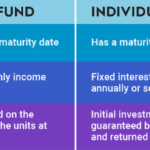How to Invest in ETFs and Mutual Funds
Investing in exchange-traded funds (ETFs) and mutual funds is a great way to build wealth over time. Both offer diversification, professional management, and accessibility for investors at all levels. However, choosing between the two and understanding how to invest can be overwhelming. This guide will walk you through the basics of investing in ETFs and mutual funds.
What Are ETFs and Mutual Funds?
ETFs (Exchange-Traded Funds): ETFs are investment funds that trade on stock exchanges, similar to individual stocks. They typically track an index, sector, or commodity and provide instant diversification at a lower cost than many mutual funds. Since ETFs trade throughout the day, their prices fluctuate just like stocks.
Mutual Funds: Mutual funds pool money from multiple investors to buy a diversified portfolio of stocks, bonds, or other assets. They are managed by professional fund managers and typically trade once per day after the market closes. Mutual funds can be actively managed (where managers make decisions to try to beat the market) or passively managed (which track an index, similar to ETFs).
Key Differences Between ETFs and Mutual Funds
| Feature | ETFs | Mutual Funds |
|---|---|---|
| Trading | Bought/sold like stocks | Bought/sold at end of day |
| Fees | Typically lower expense ratios | May have higher fees |
| Minimum Investment | No minimum investment | May have a minimum amount |
| Management Style | Usually passive (index-tracking) | Often actively managed |
| Tax Efficiency | More tax-efficient | Less tax-efficient |
Steps to Invest in ETFs and Mutual Fund
1. Set Your Investment Goals
Before investing, determine your financial goals. Are you investing for retirement, a home, or wealth-building? Understanding your time horizon and risk tolerance will help guide your investment choices.
2. Choose the Right Account
You’ll need a brokerage account to invest in ETFs or mutual fund. Consider whether you want a:
- Taxable brokerage account (for general investing)
- IRA (Individual Retirement Account) (for tax advantages on retirement savings)
- 401(k) or employer-sponsored retirement plan (if available)
3. Research and Select ETFs or Mutual Fund
Look at key factors like:
- Expense ratio: Lower fees mean more money stays invested.
- Performance history: Compare past returns to benchmark indices.
- Holdings and strategy: Ensure the fund aligns with your risk tolerance and goals.
- Management style: Decide if you prefer passive index funds or active management.
4. Buy and Manage Your Investments
- For ETFs: Buy through a brokerage during market hours, just like stocks.
- For Mutual Fund: Purchase directly from the fund company or through a brokerage, with trades executed at the day’s closing price.
- Monitor and rebalance: Regularly review your investments to maintain your desired asset allocation.
Final Thoughts
Investing in ETF and mutual fund is a smart way to grow wealth with diversified exposure to the market. ETFs offer flexibility and low fees, while mutual funds provide hands-off professional management. By understanding their differences and aligning your choices with your investment goals, you can build a solid portfolio for long-term success.
Do you have experience investing in ETFs or mutual funds? Share your thoughts in the comments!



